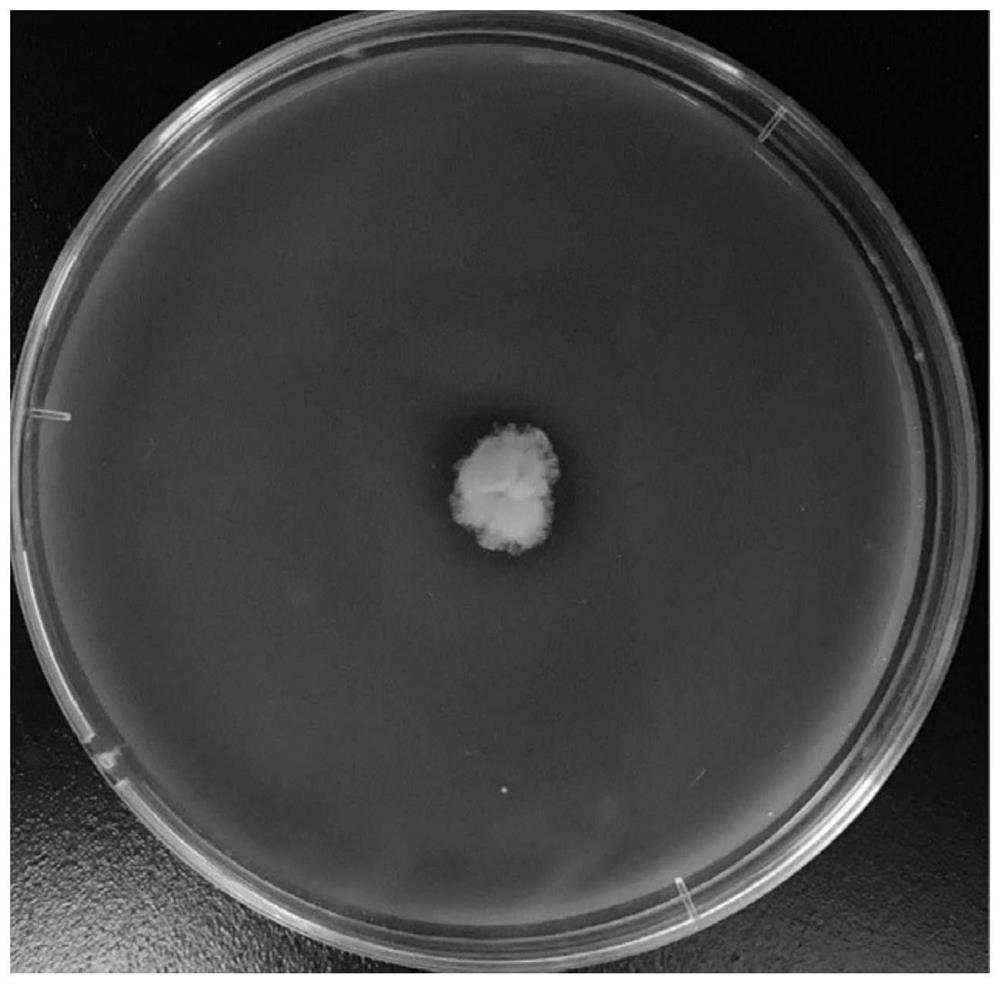Aspergillus awamori and application thereof in preparation of tannase and degradation of tannin
A kind of Aspergillus awamori and tannin technology, applied in the field of tannin degradation, can solve the problems of high corrosion resistance of equipment, difficulty in industrialization, limited application, etc., achieve wide pH adaptability, realize industrial production, and not easy to material denaturation Effect
- Summary
- Abstract
- Description
- Claims
- Application Information
AI Technical Summary
Problems solved by technology
Method used
Image
Examples
preparation example Construction
[0046] According to the present invention, the method for degrading tannin preferably includes: contacting the bacterium agent with the sample containing tannin, the bacterium agent being the fermentation product of the Aspergillus awamori; wherein, the fermentation product of the Aspergillus awamori The preparation method comprises the following steps: performing seed culture and fermentation culture of the Aspergillus awamori, obtaining fermentation cells through solid-liquid separation II, and performing solid-liquid separation III on the fermentation cells after cell crushing to obtain clear liquid.
[0047] Preferably, the cell breaking process includes: washing the fermented cells with a buffer solution, then mixing with the buffer solution and performing ultrasonic disruption. Exemplarily, the solid-liquid separation II is separated by filtration. Exemplarily, it can be filtered by sterilized gauze; the buffer is citric acid-sodium citrate buffer, and the ultrasonic crus...
Embodiment 1
[0053] S1, sampling: the sample is collected from the soil sample under the tea tree in Liuzhou, Guangxi (25°13' north latitude, 108°54' east longitude);
[0054] S2. Enrichment: Take 1g of soil sample in 9mL of sterile water, add glass beads to disperse the soil sample and shake it evenly, and dilute the soil bacteria suspension to 10% by gradient dilution method. -1 -10 -5 The enrichment medium is Bengal red culture medium (the main components are Bengal red, chloramphenicol, magnesium sulfate, potassium dihydrogen phosphate, agar, glucose, peptone), absorb 200 μL of the bacterial solution after gradient dilution, and use a coating stick to Spread evenly in Bengal red medium, and carry out enrichment culture to obtain enriched strains;
[0055] S3, initial screening: select Cha's solid medium plus tannic acid (tannic acid content is 2% by weight) as the initial screening medium, the enriched strains obtained in S2 are picked and inoculated on the initial screening medium wi...
Embodiment 2
[0059] (1) Grind the dried pomegranate peel into powder, add 30 mL of ethanol-water solution with an ethanol concentration of 70% by volume to 1 g of pomegranate peel powder, vibrate for 1 hour at a temperature of 60°C and a rotational speed of 180rpm, and then shake it at a temperature of 60°C 1. After ultrasonic treatment for 1 h under the condition of ultrasonic power of 550 W, centrifuge at 8000 rpm for 5 min at room temperature to obtain the extract;
[0060] (2) The extract obtained in step (1) is removed by rotary steaming to remove ethanol until it is colloidal to obtain a rotary steamed product, and the rotary steamed product is mixed with 30 mL of pure water to obtain a sample containing tannin, and the ellagitannin in the sample is determined The content is about 7.90g / L;
[0061] (3) After activating the Aspergillus awamori obtained in Example 1, inoculate it in the seed medium, cultivate it for 48 hours at a temperature of 30° C. and a rotation speed of 220 rpm to...
PUM
 Login to View More
Login to View More Abstract
Description
Claims
Application Information
 Login to View More
Login to View More - R&D Engineer
- R&D Manager
- IP Professional
- Industry Leading Data Capabilities
- Powerful AI technology
- Patent DNA Extraction
Browse by: Latest US Patents, China's latest patents, Technical Efficacy Thesaurus, Application Domain, Technology Topic, Popular Technical Reports.
© 2024 PatSnap. All rights reserved.Legal|Privacy policy|Modern Slavery Act Transparency Statement|Sitemap|About US| Contact US: help@patsnap.com








